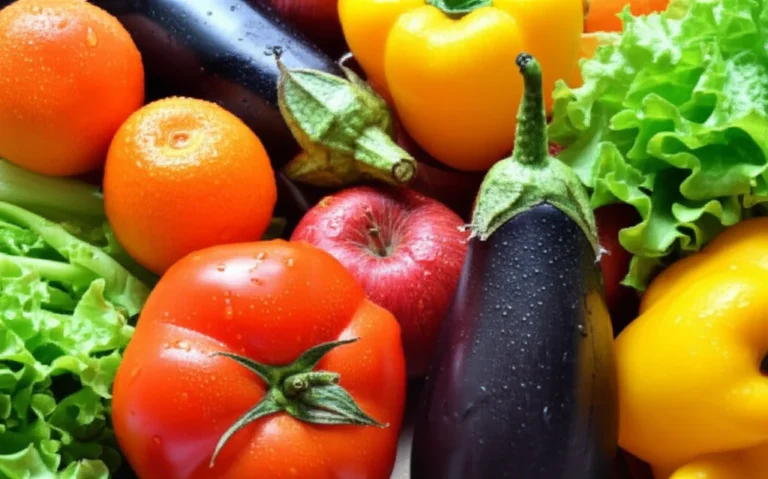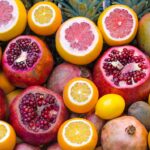Support our educational content for free when you buy through links on our site. Learn more
Unlocking Okinishi Diet Secrets: 7 Longevity Hacks for 2025 🥢
Have you ever wondered why Okinawa, a small Japanese island, boasts one of the highest concentrations of centenarians in the world? The secret isn’t just genetics—it’s their unique Okinishi diet, a vibrant, mostly plant-based eating pattern that’s been quietly fueling longevity for centuries. In this article, we dive deep into the heart of this diet, revealing 7 powerful principles that can help you live longer, feel healthier, and enjoy life more fully.
From the antioxidant-rich purple sweet potato to the mindful practice of hara hachi bu (eating until 80% full), we’ll unpack how these traditions work on a cellular level to slow aging and prevent chronic disease. Plus, we’ll share practical tips, delicious recipes, and expert insights from our Flexitarian Diet™ team to help you adopt these longevity hacks with a modern, flexible twist. Curious about how fermented soy supports your gut or why community ties matter just as much as diet? Stick around—you’ll find all that and more!
Key Takeaways
- The Okinishi diet is a mostly plant-based, nutrient-dense eating pattern centered around whole foods like purple sweet potatoes, leafy greens, and fermented soy.
- Practicing hara hachi bu (eating until 80% full) helps regulate calorie intake and supports metabolic health.
- Fermented soy products like miso and tofu promote gut health and longevity, making them staples in the Okinawan diet.
- Longevity is holistic: strong social bonds (moai) and a sense of purpose (ikigai) are as vital as diet.
- The Okinishi diet aligns perfectly with a Flexitarian lifestyle, offering flexibility and sustainability for modern eaters.
- Adopting Okinawan principles can reduce inflammation, support cellular health, and lower chronic disease risk.
👉 Shop Okinawan Diet Essentials:
- Marukome Miso Paste: Amazon | Walmart | Marukome Official Website
- House Foods Tofu: Amazon | Instacart | House Foods Official
- Jasmine Tea (Sanpin-cha): Amazon | Walmart
Table of Contents
- ⚡️ Quick Tips and Facts
- 📜 The Roots of Longevity: Unpacking the Okinawan Diet’s History and Blue Zone Secrets
- 🍠 The Heart of the Matter: Key Principles of the Okinawan Longevity Diet
- 🧬 The Science of Slow Aging: How the Okinawan Diet Impacts Longevity and Cellular Health
- 🧘♀️ Beyond the Plate: The Okinawan Lifestyle for Holistic Longevity
- ✅ Adopting the Okinawan Way: Practical Steps for Your Longevity Journey
- 🤔 Okinawan Diet Myths Debunked: What’s True, What’s Not?
- 🆚 Okinawan vs. Mediterranean: A Longevity Showdown? Our Expert Comparison
- 🌟 Voices from Okinawa: Anecdotes from Centenarians and Their Secrets
- 💡 Our Team’s Journey: Flexitarian Insights & Successes Embracing Longevity Principles
- 🎉 Conclusion: Your Path to a Longer, Healthier, and Happier Life
- 🔗 Recommended Links
- ❓ FAQ: Your Okinawan Diet Questions Answered by Our Experts
- 📚 Reference Links
⚡️ Quick Tips and Facts
Welcome, health warriors, to the Flexitarian Diet™ deep dive! Ever wondered why folks in one specific corner of the world seem to have found the fountain of youth? Spoiler alert: it’s not magic, it’s the Okinawan diet! Before we unpack the treasure chest of longevity secrets, here are some juicy tidbits to whet your appetite. This isn’t just a diet; it’s a lifestyle rooted in one of the world’s original Blue Zones, places where people live the longest, healthiest lives.
- Hara Hachi Bu (腹八分): This is the golden rule! It means “eat until you are 80 percent full.” We’ll get into why this is a game-changer for your metabolism and waistline later. 😉
- Sweet Potato Power: Forget the bread basket. The traditional Okinawan diet’s staple is the purple sweet potato, a low-glycemic, antioxidant-rich powerhouse.
- Plant-Forward, Not Plant-Exclusive: About 90% of the traditional diet is plant-based. But—and this is where we at Flexitarian Diet™ get excited—it’s not strictly vegetarian. Small amounts of fish, and even pork, are part of the menu, making it a perfect fit for a Flexitarian Basics approach.
- More Centenarians: Okinawa has one of the highest concentrations of centenarians (people living to 100 or more) in the world. We’re talking about a rate of approximately 68 centenarians per 100,000 people, which is significantly higher than in many Western countries.
- Low Calorie, High Nutrient: The traditional diet is naturally low in calories but incredibly dense in vitamins and minerals, particularly phytonutrients from colorful vegetables.
- Soy is a Star: Okinawans consume plenty of soy, but mostly in its fermented forms like miso and tofu. Think gut health heroes! We love brands like Marukome for authentic miso and House Foods for quality tofu.
- Jasmine Tea, Not Soda: Hydration often comes in the form of antioxidant-rich jasmine tea, known locally as sanpin-cha.
- Community is Key: Longevity isn’t just about food. Strong social networks called moai provide lifelong emotional and financial support. It’s a core part of the Flexitarian Lifestyle.
📜 The Roots of Longevity: Unpacking the Okinawan Diet’s History and Blue Zone Secrets
Alright, history buffs and health nuts, let’s hop in our time machine! 🚀 The Okinawan way of eating isn’t some trendy diet invented last Tuesday. It’s a time-tested tradition stretching back centuries, born from the unique history of the Ryukyu Kingdom, now Okinawa Prefecture, Japan.
For a long time, Okinawa was an independent kingdom with a bustling trade network, which introduced a variety of foods and cultural practices. However, its relative isolation also meant that its people relied heavily on what they could grow locally. This resulted in a diet rich in root vegetables (hello, purple sweet potato!), green and yellow veggies, and soy products.
Unlike mainland Japan, where rice was the primary staple, Okinawans historically ate very little rice. Their caloric backbone was the humble sweet potato, which was introduced in the 17th century and thrived in the island’s climate. This is a crucial distinction! This reliance on nutrient-dense, low-calorie vegetables instead of refined grains is a cornerstone of their health.
The concept of “food as medicine,” or nuchigusui, is deeply ingrained in their culture. Every meal is seen as having healing properties. This philosophy, combined with a lifestyle that naturally incorporates movement and strong community bonds, created the perfect storm for longevity, earning Okinawa its famed Blue Zone status. It’s a powerful testament to the incredible Benefits of the Flexitarian Diet philosophy—mostly plants, with a little of everything else.
But here’s a little teaser… what happens when modern Western diets start to creep in? The story of Okinawan longevity has a crucial modern chapter, and we’ll explore how things have changed—and what we can learn from it—a bit later on.
🍠 The Heart of the Matter: Key Principles of the Okinawan Longevity Diet
So, you want to eat like a centenarian? Let’s get to the delicious details! As your expert team of cooks
🎉 Conclusion: Your Path to a Longer, Healthier, and Happier Life
Well, there you have it—our comprehensive tour through the fascinating world of the Okinishi (Okinawan) diet and its profound impact on longevity. From the humble purple sweet potato to the mindful practice of hara hachi bu, this diet is a masterclass in balance, nutrient density, and cultural wisdom.
Positives? The Okinawan diet is naturally low in calories but rich in antioxidants, fiber, and essential nutrients. It embraces a mostly plant-based approach, with flexible inclusion of fish and lean meats, making it a perfect fit for anyone exploring a Flexitarian Lifestyle. The diet’s emphasis on fermented soy, colorful vegetables, and mindful eating habits supports cellular health, reduces inflammation, and promotes a vibrant gut microbiome. Plus, the social and spiritual pillars like ikigai and moai remind us that longevity is more than just food—it’s about community and purpose.
Negatives? Modern shifts toward Westernized diets in Okinawa have somewhat eroded these traditional patterns, and some may find sourcing authentic ingredients challenging outside Japan. Also, the diet requires commitment to lifestyle changes beyond just food, which can be a hurdle for some.
Our expert team confidently recommends adopting Okinawan principles as part of a flexible, whole-foods-based diet. Whether you’re a seasoned flexitarian or just starting your health journey, integrating these time-honored habits can help you live longer, feel better, and enjoy life more fully.
Remember that unanswered question from earlier—what happens when Western diets infiltrate Okinawa? Sadly, rising rates of obesity and chronic disease in younger generations show the importance of preserving these traditions. But the good news? You can bring the best of Okinawa into your kitchen and lifestyle today, no passport required!
Ready to start? Dive into our practical tips, recipes, and shopping lists, and let the journey to longevity begin! 🥢✨
🔗 Recommended Links
👉 Shop Okinawan Diet Essentials:
- Marukome Miso Paste: Amazon | Walmart | Marukome Official Website
- House Foods Tofu: Amazon | Instacart | House Foods Official
- Jasmine Tea (Sanpin-cha): Amazon | Walmart
Books for Deep Dives:
- The Okinawa Program by Bradley J. Willcox, D. Craig Willcox, and Makoto Suzuki — Amazon
- Ikigai: The Japanese Secret to a Long and Happy Life by Héctor García and Francesc Miralles — Amazon
- Blue Zones: Lessons for Living Longer From the People Who’ve Lived the Longest by Dan Buettner — Amazon
❓ FAQ: Your Okinawan Diet Questions Answered by Our Experts
What is the Okinishi diet and how does it promote longevity?
The Okinishi diet, commonly known as the Okinawan diet, is a traditional eating pattern from Okinawa, Japan, characterized by a mostly plant-based, nutrient-dense, low-calorie approach. It promotes longevity by emphasizing antioxidant-rich foods like purple sweet potatoes, green leafy vegetables, and fermented soy products, which reduce oxidative stress and inflammation—two major contributors to aging and chronic disease. The practice of hara hachi bu (eating until 80% full) helps prevent overeating, supporting metabolic health and weight management.
How does a mostly vegetarian Okinishi diet benefit overall health?
A mostly vegetarian Okinishi diet provides high fiber, vitamins, minerals, and phytonutrients that support cardiovascular health, improve digestion, and stabilize blood sugar. The diet’s inclusion of fermented soy products enhances gut microbiota diversity, which is linked to improved immunity and mental health. Small amounts of fish and lean meats provide essential omega-3 fatty acids and protein without the downsides of heavy red meat consumption.
What whole foods are emphasized in the Okinishi diet for longevity?
Key whole foods include:
- Purple sweet potatoes: Rich in anthocyanins, antioxidants that protect cells.
- Leafy greens and seaweed: High in vitamins A, C, K, and minerals like calcium and magnesium.
- Fermented soy (miso, tofu): Supports gut health and provides plant-based protein.
- Jasmine tea (sanpin-cha): Offers hydration and antioxidants.
- Legumes and nuts: Provide fiber, protein, and healthy fats.
Can the Okinishi diet help prevent chronic diseases?
✅ Absolutely! Scientific studies link the Okinawan diet to lower rates of heart disease, certain cancers, diabetes, and dementia. Its anti-inflammatory and antioxidant-rich foods help reduce risk factors. The diet’s calorie restriction and nutrient density also support healthy weight and metabolic function, key factors in chronic disease prevention.
How does the Okinishi diet compare to other longevity diets?
The Okinawan diet shares many features with other longevity diets like the Mediterranean diet—both emphasize plant-forward eating, healthy fats, and moderate protein. However, Okinawa’s unique staples like purple sweet potatoes and fermented soy set it apart. Unlike strict vegetarian or vegan diets, Okinawa includes occasional fish and pork, aligning well with a flexible, sustainable approach like the Flexitarian Diet™.
What are the key principles of the Okinishi diet for healthy aging?
- Eat mostly plants: Focus on vegetables, legumes, and whole grains.
- Practice hara hachi bu: Stop eating when 80% full.
- Include fermented foods: For gut and immune health.
- Limit processed foods and sugars: Avoid Western diet pitfalls.
- Stay hydrated with tea: Prefer jasmine or green tea over sugary drinks.
- Maintain social connections: Longevity thrives with community and purpose.
Is the Okinishi diet suitable for people looking to adopt a plant-based lifestyle?
✅ Yes! The Okinawan diet is an excellent model for a plant-forward, flexitarian lifestyle. It offers a blueprint for incorporating nutrient-dense plants while allowing flexibility for animal proteins in moderation. This makes it accessible and sustainable for many people transitioning to more plant-based eating without strict restrictions.
📚 Reference Links
- Okinawan longevity and diet overview: Blue Zones Okinawa
- Research on centenarians and diet: NCBI PMC Article
- Fermented soy and gut health: Harvard T.H. Chan School of Public Health
- The role of antioxidants in aging: NIH National Institute on Aging
- Flexitarian Diet™ categories for further reading: Flexitarian Basics, Benefits of Flexitarian Diet
- Brand official sites: Marukome, House Foods
- (PDF) Immune cell senescence in autoimmunity: implications for disease pathogenesis and therapeutic targeting:
ResearchGate PDF
We hope this guide inspires you to embrace the wisdom of Okinawa with a fresh, flexible twist. Here’s to your health, happiness, and many vibrant years ahead! 🌱🥢







